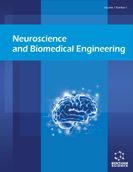Abstract
We evaluated the physiological and morphological changes of cortical neurons by electric or magnetic brain stimulation in rats. Repetitive electric stimulation (rES) to anesthetized rats was delivered with a stimulus frequency(SF) of 1 Hz or 0.2 Hz for 3 hours and 20 minutes via stainless screws put on the somatosensory cortex. Repetitive transcranial magnetic stimulation (rTMS) to the somatosensory cortex was performed with SF of 0.2 Hz for 2 hours and 20 minutes through a small double-cone coil. During and after the stimulation, somatosensory evoked potentials (SEPs) elicited by the sciatic nerve were recorded from the somatosensory cortex. For histochemical analysis, rats were sacrificed just after rES or rTMS for 80 minutes. Compared to controls, a cortical component of SEPs (N1), was significantly inhibited by 1 Hz or 0.2 Hz rES (P<0.02). Inhibition of N1 by rES persisted even at one hour after stopping the stimulation. rTMS significantly inhibited N1 at 20 minutes after the onset of stimulation (P<0.05), but the N1 amplitudes gradually increased before stopping the stimulation. Immunohistochemical analysis demonstrated c-Fos immunoreactive neurons predominantly in the stimulated cortical areas. The continuous stimulation with low frequency rES or rTMS inhibited neural excitability of somatosensory cortex. We assume that c-Fos immunoreactivity is a good histochemical marker immediately reacting to electric or magnetic brain stimulation in rats.
Keywords: c-Fos, electric brain stimulation, immunoreactivity, magnetic brain stimulation, rat, somatosensory evoked potentials (SEPs).
 12
12

